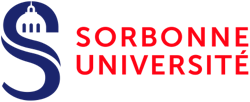Portrait of Laetitia, 21 years old and student researcher on dilated cardiomyopathy
On the occasion of the International Day of Women and Girls in Science on February 11, 2023 organized by UNESCO, we present the research work of Laetitia Rialland, a young doctoral student in molecular genetics at the UMRS 1166 / IHU ICAN (Pitié-Salpêtrière Hospital).
At the age of 21, Laetitia is currently working on a thesis project on the understanding of the genetic causes of human dilated cardiomyopathies (the first indication for heart transplants in France and in the world). She is a laureate of the Inserm Liliane Bettencourt School.
2018-2022: an early entry into scientific research
At a very young age, Laetitia Rialland developed an interest in medicine and in jobs related to human beings and the understanding of life, with a curiosity for biology. Medical studies thus proved to be an obvious choice, and she joined the Faculty of Medicine in Nantes in 2018.
His encounter with the research community took place in 2nd year of medical school, when it integrates theInserm School Liliane Bettencourt in 2020. This double curriculum allows him to follow a early research training, with the completion of a Master 2 during which she will do a 6-month internship (from January to July 2022) at theUniversity Hospital of Pitié Salpêtrièrein the Functional Unit of Cardiogenetics and Molecular and Cellular Myogenetics of Pascale Richard (MD, PhD). This immersion in the scientific world confirms his passion for science.Laetitia: “The analysis of the results is often the most exciting moment, when we discover the result of weeks, even months of work! It generates many new questions and avenues to explore. It can be frustrating to have to concentrate only on certain tracks due to lack of time. I also appreciate the multidisciplinarity, being at the interface of several exciting disciplines: genetics, cardiovascular biology, molecular biology, bioinformatics…”
“The investment required is important: some manipulations can last dozens of hours, several days in a row. This intense pace requires great concentration, but the impatience to discover the fruits of one’s work reinforces motivation. You have to be patient in the face of incompressible waiting times and use this time to anticipate future steps and formulate new hypotheses.”
2022-2025: a thesis project on cardiomyopathies
Since October 2022, Laetitia Rialland has chosen to pursue this exciting path by carrying out a thesis entitled “Transcriptional analysis of the genetic causes of human dilated cardiomyopathies” within team 1 of UMRS 1166 (IHU ICAN).His research project, called the Calorr project, is based around the understanding of cardiomyopathies, which are diseases affecting the structure and function of the heart muscle. They most often begin in adolescents or young adults, and are the first indication for heart transplantation (71% of transplants in patients under 40).
Laetitia Rialland is studying an innovative strategy of mRNA-seq by 3rd generation sequencing (Long Read). The objective is to better understand the splicing alterations responsible for cardiomyopathies, in order to consider the definition of a new diagnostic panel by mRNA sequencing that would improve the diagnostic yield.Know more about Calorr projectLaetitia: “Thanks to the use of this technology, the Calorr project represents a real opportunity to improve molecular diagnosis, which is necessary for the proper management and treatment of patients. It is important to understand that in order to treat a disease, one must understand it and know its origin.
My daily work life? No two days are alike! I consider that:
- 1/3 de mon temps de travail est consacré à des manipulations « à la paillasse »,
- 1/3 to bibliographic research with the realization of a state of the art,
- And 1/3 to the analysis of the results, the implementation of protocols, training, meetings…
This distribution of time will evolve as my thesis progresses, with the analysis of the results taking a more and more important part. The final challenge will be to differentiate disease-causing variants from benign variants.This is a big job of data analysis and comparison, which will be spread over my next 3 years of PhD.”Various actors are involved in the progress of the project, including:
- Eric Villard (PhD supervisor) and Phillipe Charron (Team leader, UMRS 1166 / IHU ICAN),
- Pascale Richard for the part on the established diagnosis (Functional Unit of Cardiogenetics and Molecular and Cellular Myogenetics), with whom Laetitia also continues to work on her Master 2 research project,
- The UMRS 1166 team,
- The Pitié-Salpêtrière (P3S) post-genomic platform for sequencing,
- The ICAN I/O platform for bioinformatics analysis,
- Oxford Nanopore for the use of Long Read sequencing technology.
After 2025: what future in research?
Laetitia: “The genetics of cardiomyopathies is a discipline that has evolved a lot:
- In 2001, the first sequencing of the human genome took place after 15 years of work involving hundreds of researchers.
- In 2022, the new record for sequencing the human genome is set at 7 hours and 18 minutes.
Even if this record remains exceptional, it shows that scientific research is constantly improving its technological capabilities. This has allowed us to discover a large number of genes involved in cardiomyopathies in the last few decades and to considerably improve the management of these patients. In the coming years, we will be able to generate more and more sequencing data, but the challenge will be to succeed in understanding and analyzing all this data. »After obtaining her thesis, Laetitia wishes to resume her medical studies in 4th year and to continue in parallel the research with the Inserm Liliane Bettencourt School. She aspires to a university hospital career in order to share her time between research and direct contact with patients.“This exciting career path requires a lot of work, investment and motivation! I encourage all women and girls interested in scientific research to go for it. I have not encountered any barriers to being a woman in this field, and we are even majority represented in some disciplines.”Know more about Calorr projectMake a donation to support research







